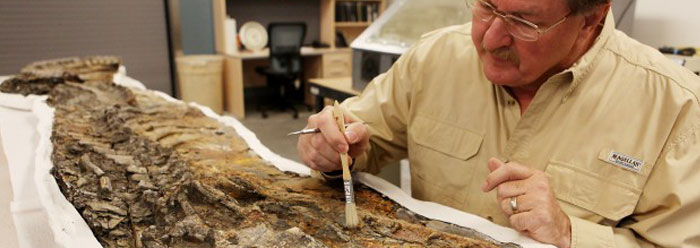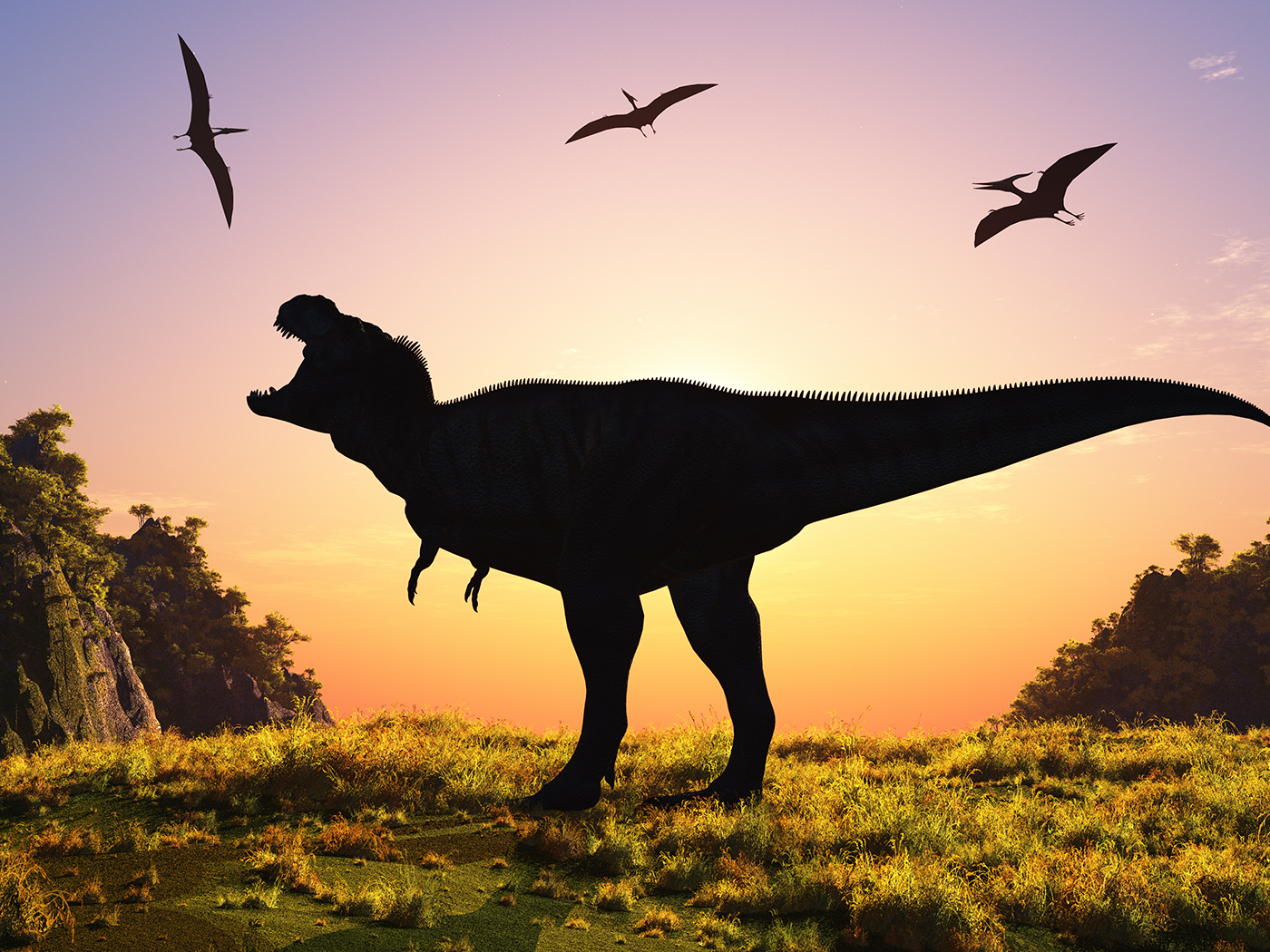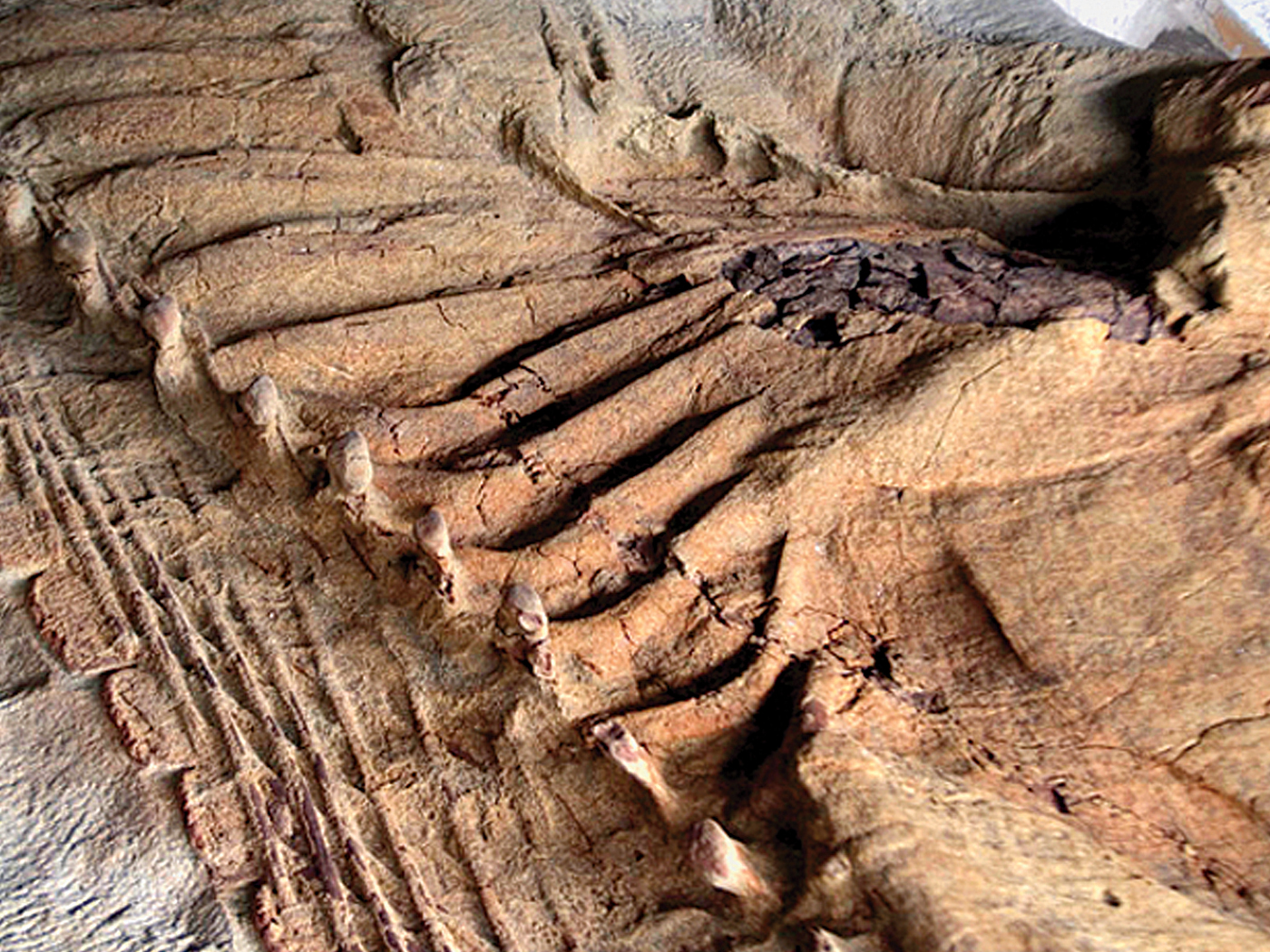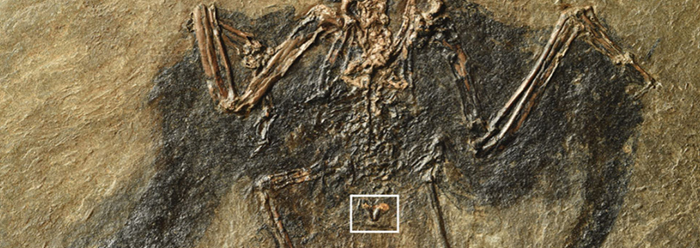School children have been told that it takes long ages for a fossil to form and that fossils have been buried under deep rock layers for millions of years. However, increasing discoveries of fossils with soft tissue show clear evidence that refutes both claims. For example, a newly discovered ten-foot-long mosasaur fossil in South Dakota not only had soft tissues of its own, but also remnants of what it last ate.
Embedded in fine layers of shale near Chamberlain in central South Dakota, the fossil was exposed by flooding along the Missouri River. Its "remarkable" preservation not only kept the bones in articulated positions, but also retained some original soft tissues. A team of South Dakota School of Mines & Technology paleontologists discovered the fossil in September of this year. It was transported to the School of Mines in Rapid City, which plans to display it in the school's Museum of Geology.
Museum curator James Martin told the Rapid City Journal, "There is cartilage still on the shoulder blade and on a bone called a coracoid." The report also stated, "This fossil also includes the contents of the animal's stomach―its last meal."1
"The fossil that was discovered this past summer lived during the Age of Reptiles 80 million years ago," a photo caption for the story declared.2 But this date does not square with the fact that the fossil has the original organic remains Martin mentioned.
Cartilage is a mixture of biological materials, including collagen and elastin proteins. These same proteins were specifically detected in an "80 million year old" hadrosaur recently.3 Collagen is also integral to bone tissue.
Scientists have conducted experiments that track the decay rate of collagen protein. One team, led by origin of life researcher Jeffrey Bada, found that "internal hydrolysis [the decay of a molecule involving the splitting of water molecules] fragments the original protein," so that it spontaneously falls apart.4 They calculated that the collagen locked inside solid bone decays faster than the collagen embedded in seashells.5
That collagen decay study did not experiment directly on cartilage, but it stands to reason that the collagen in cartilage would decay even faster than that inside the mineralized bone matrix, since it is much more exposed.
A numerical estimate in a standard biochemistry textbook further demonstrates the erroneous nature of the "millions of years" age assignment for this mosasaur. The textbook states, "In the absence of a catalyst, the half-life for the hydrolysis of a typical peptide [short protein segment] at neutral pH is estimated to be between 10 and 1000 years."6 What this means is that after 1,000 years, one half of the original protein sample, if kept cool and dry, would be expected to have broken down. Then after another 1,000 years, half of that would also be gone. Eventually, none would be left. At this fast rate, one wonders if any remainder of even an earth-sized ball of protein could exist after 80 million years!
Whereas collagen proteins are not typical in that they are not soluble in water, they still break down far too rapidly to fit vast evolutionary ages, as Bada and his colleagues showed.
So, how is it that evolutionary history holds that collagen-containing cartilage is supposedly 80 million years old and yet laboratory experiments demonstrate that collagen locked in bone should not be older than 30,000 years? The evidence against this evolutionary age assignment makes belief in it an act of blind faith.
References
- Buchholz, C. C. School of Mines paleontologists make monster find. Rapid City Journal. Posted on rapidcidytjournal.com October 22, 2010, accessed October 22, 2010.
- Ibid, photo caption.
- Schweitzer, M. H. et al. 2009. Biomolecular Characterization and Protein Sequences of the Campanian Hadrosaur B. Canadensis. Science. 324 (5927): 626-631.
- Bada, J. L., S. X. Wang, and H. Hamilton. 1999. Preservation of key biomolecules in the fossil record: current knowledge and future challenges. Philosophical Transactions of the Royal Society B. 354 (1379): 77.
- "Hydrolysis of the main protein component, collagen, is even more rapid and little intact collagen remains after only 1-3 x 104 years, except in bones in cool or dry depositional environments." Ibid.
- Berg, J. M., J. L. Tymoczko and L. Stryer. 2002. 9.1 Proteases: Facilitating a Difficult Reaction. In Biochemistry, 5th ed. New York: W. H. Freeman.
Image Credit: Copyright © 2010 rapidcityjournal.com. Adapted for use in accordance with federal copyright (fair use doctrine) law. Usage by ICR does not imply endorsement of copyright holders.
* Mr. Thomas is Science Writer at the Institute for Creation Research.
Article posted on October 29, 2010.
























